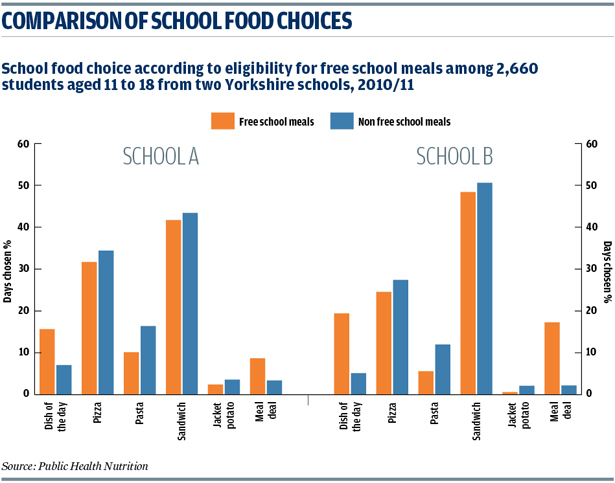Authors Hannah Ensaff, Jean Russell and Margo E. Barker, University of Sheffield
Published by Public Health Nutrition, December 2013
Summary
Researchers studied 2,660 11- to 18-year-olds in two schools in Yorkshire, both of which held National Healthy School Status and used the local authority catering service. Take-up of free school meals in School A was nine per cent, below the national average of 15.9 per. In School B take-up of free school meals was above the national average at 17 per cent. The researchers used data from the schools’ electronic card payment systems to analyse students’ choices over a seven-month period in 2010/11. Children eligible for free school meals made up nine per cent of the students using the catering facilities in School A and 22 per cent in School B.
The study showed that overall students choosing a main course were more likely to go for a sandwich (40.4 per cent in School A and 48.3 per cent in School B) or pizza (31.2 per cent and 27.3 per cent) than a more nutritionally valuable main “dish of the day” such as roast beef, vegetarian curry or shepherd’s pie (8.7 per cent and 8.3 per cent respectively).
Students on free school meals ordered the main “dish of the day” on a significantly higher percentage of days than their peers. In School A this was 15.67 per cent of pupils on free school meals as opposed to 7
Register Now to Continue Reading
Thank you for visiting Children & Young People Now and making use of our archive of more than 60,000 expert features, topics hubs, case studies and policy updates. Why not register today and enjoy the following great benefits:
What's Included
-
Free access to 4 subscriber-only articles per month
-
Email newsletter providing advice and guidance across the sector
Already have an account? Sign in here

